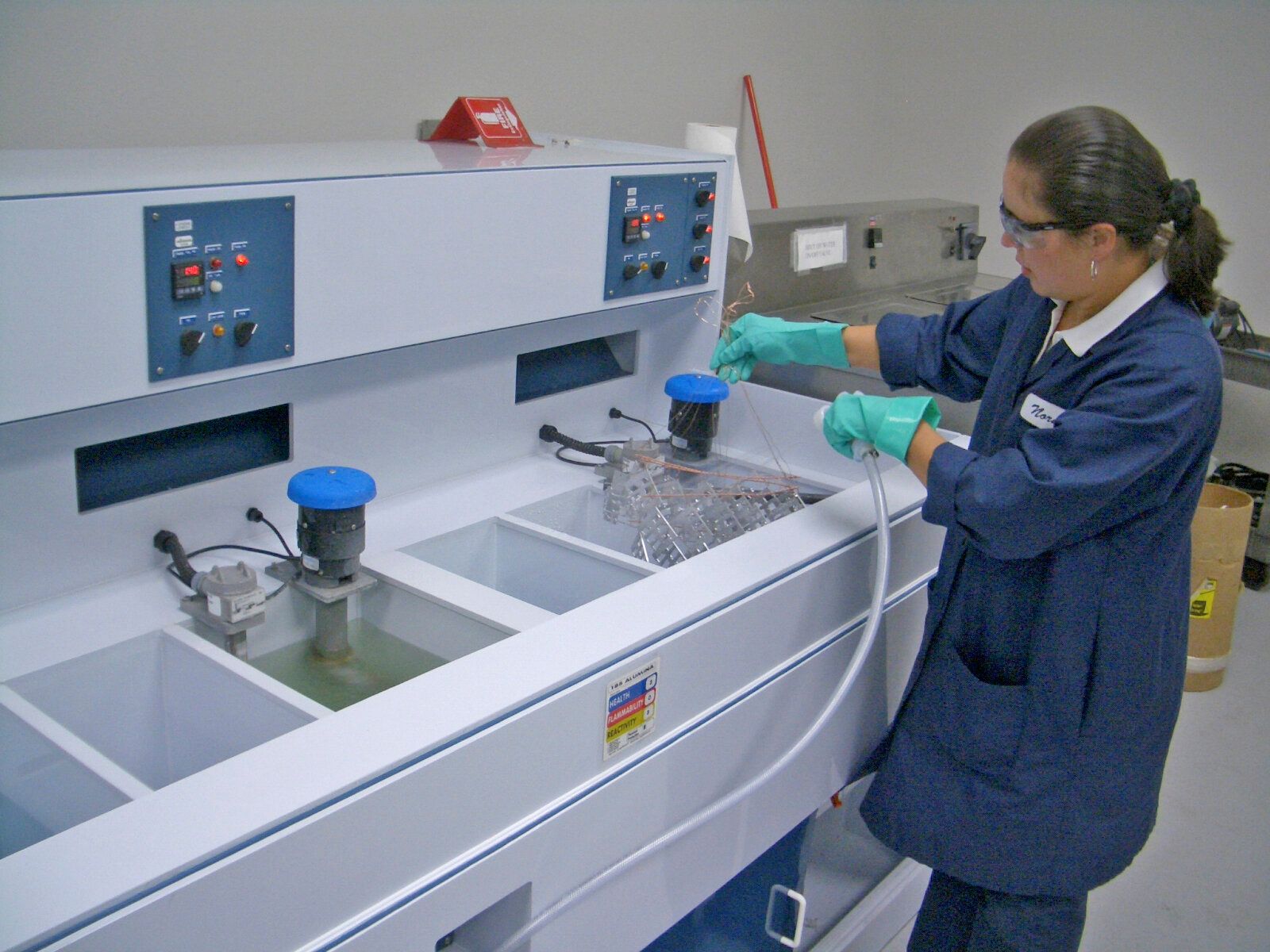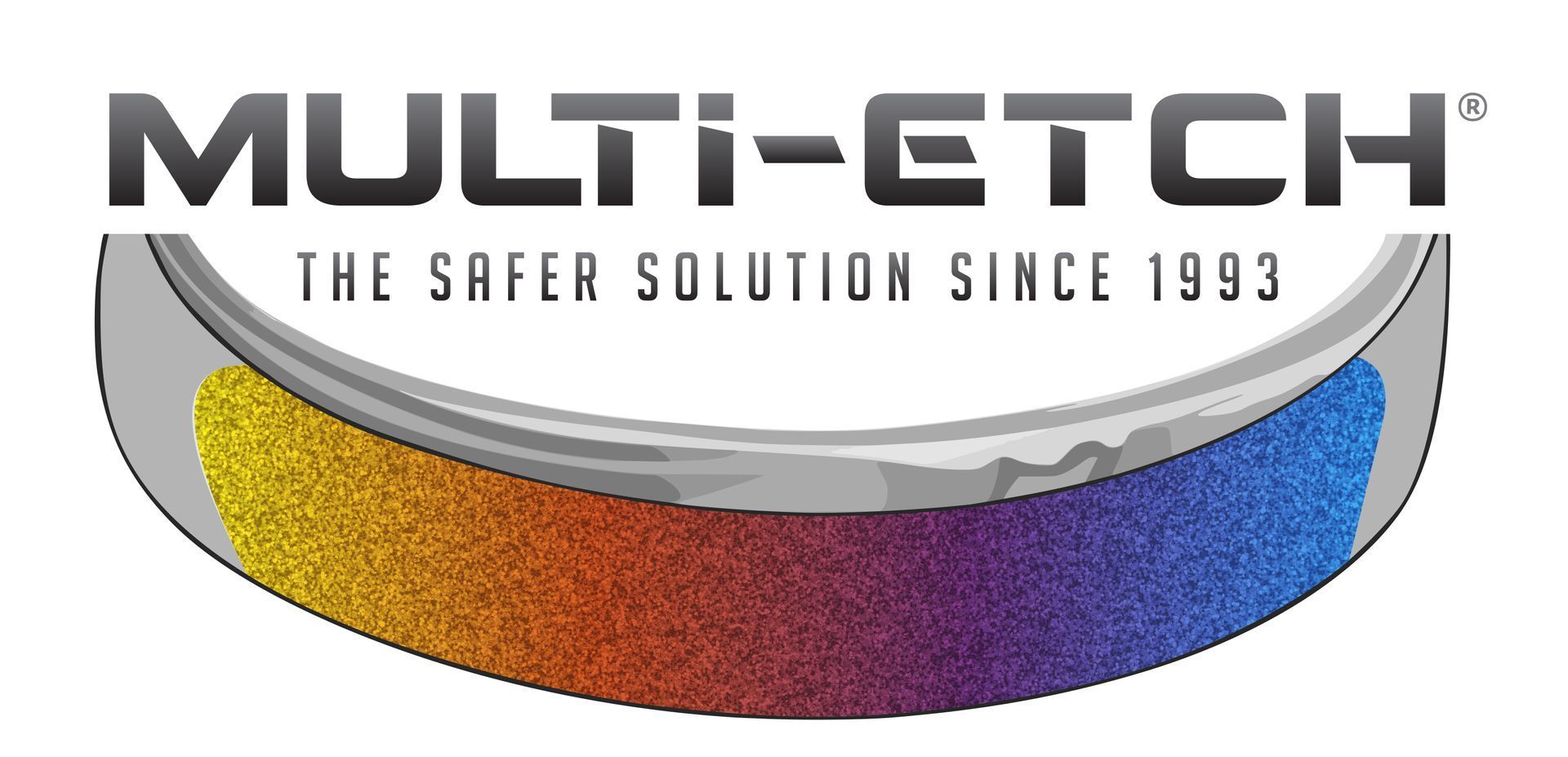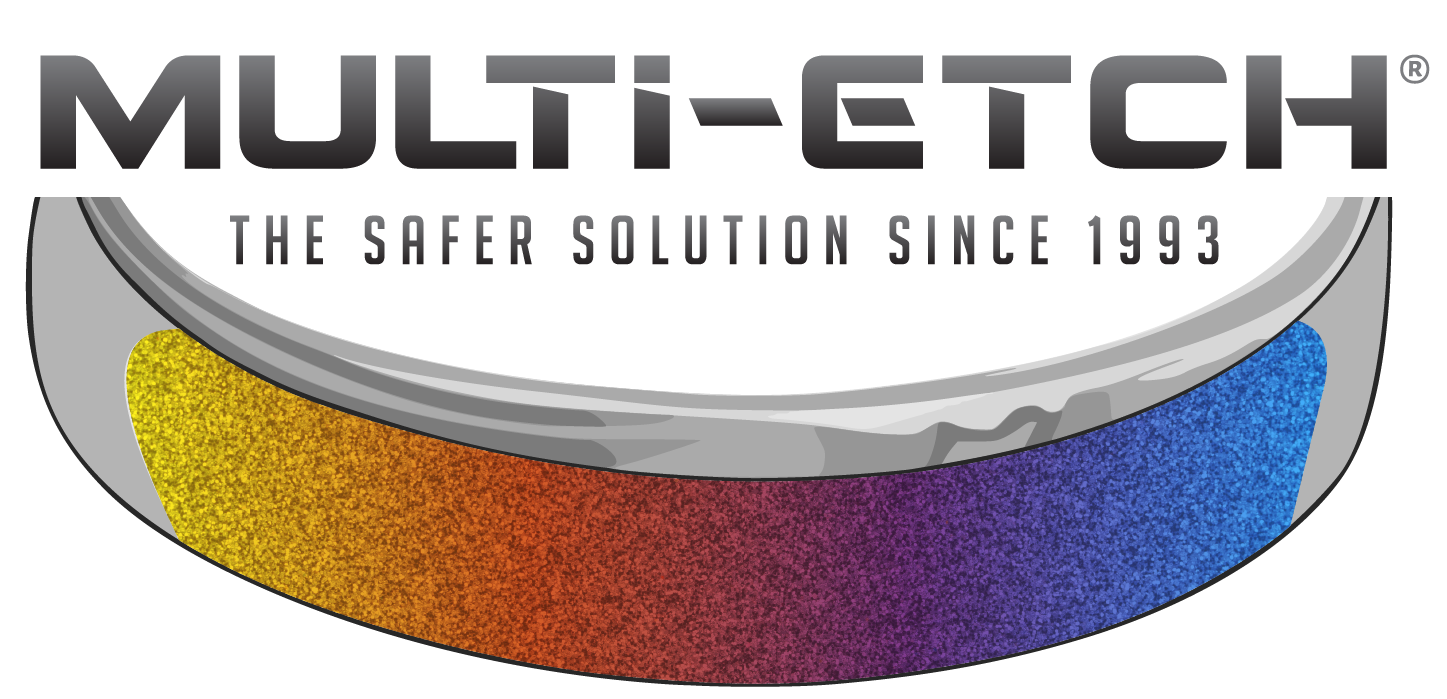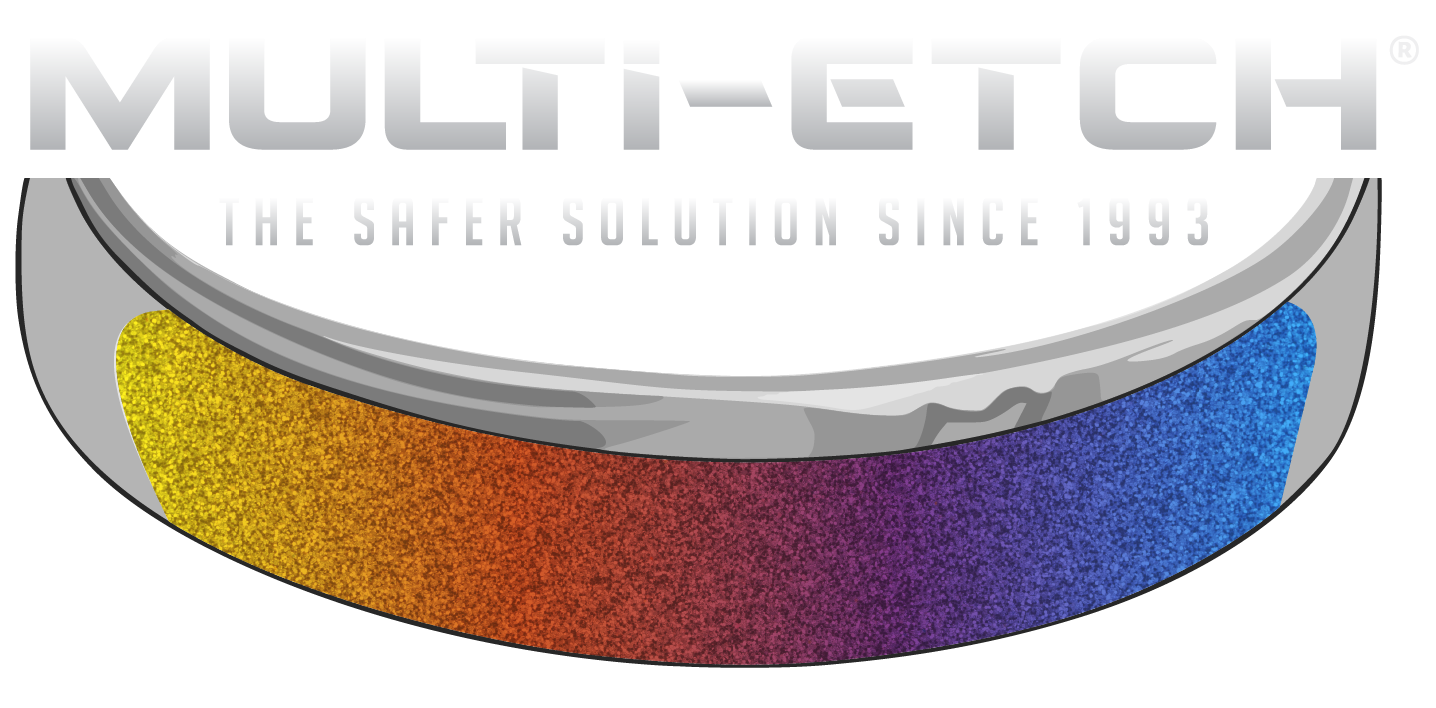MULTI-ETCH BATH LIFE

How to keep etch times consistent with Multi-Etch
When is the Multi-Etch solution used up?
The limiting factor is that as you etch, molecules of titanium (or whatever metal you’re etching) collect in your bath. When you accumulate too much metal, it will start to plate back on to your workpiece and inhibit good color in titanium. And unfortunately, pH is not helpful in determining when the bath is spent. However, pH does gradually become more acidic as the etchant ages, whether or not the etchant has been used.
So, how can you tell when the etchant is spent? The short answer is that the etchant is still working if:
· You’re able to get good color
· You’re able to get good welds
· You achieve the listed removal rates (see Etch Rate charts)
· You can remove unfused particles from 3-D printed parts
One gallon of regular-strength Multi-Etch will clean approximately 5,000 square inches of titanium when dipped for ten seconds at 150—160°F. As the etchant gets used, you may find that longer etching times can lengthen the lifespan of the etch bath.
Generally, if you are working on one-offs or other special pieces, it’s best to use fresh etchant. However, we have heard from the field that if you are after high voltage green, it is sometimes better to do that in a bath that has already been used; some initial use can act as a catalyst.
It’s a good idea when etching with used etchant to first check for good color, welds, etc. by etching some titanium scrap of the same type/alloy as your workpiece and making sure you get the results you’re after.
If you work with gallons of etchant at a time and repeatedly anodize lots of similarly-sized parts, you want to spend the time to determine the quantity of parts you can regularly etch before the etchant is spent. This will require some “sacrificial” parts at least toward the end of the lifespan of your first etchant bath.
Once you’ve determined how much you can etch before you no longer get good color, you might want to back off by 5% or so with all subsequent etching baths to make sure there’s never any bad anodizing. This is especially true for dental and medical implants, when protocol prohibits removing “bad” anodizing and redoing it.
How to Keep Etch Times Consistent
In order to keep your etch bath consistent and minimize line workers having to change their etch time as the bath gets used up, you can make periodic cuts of the etch tank and replace the cut volume with fresh etchant. As an example, let’s say you estimate an etch life of four weeks for your usual Multi-Etch volume. Instead of scrapping the used etchant and making up a fresh batch every four weeks, it would be better to cut the etch tank by ¼ every week and make it up with fresh chemistry.
So, for example, week one is a fresh bath. Week 2, remove ¼ of the used etchant volume and replace with an equal amount of fresh etchant. Week 3 and 4, repeat. Week 5, start over with a new etchant bath.
Maintaining the etch this way, each week you would begin with roughly the same level of fresh etchant as any other week.



